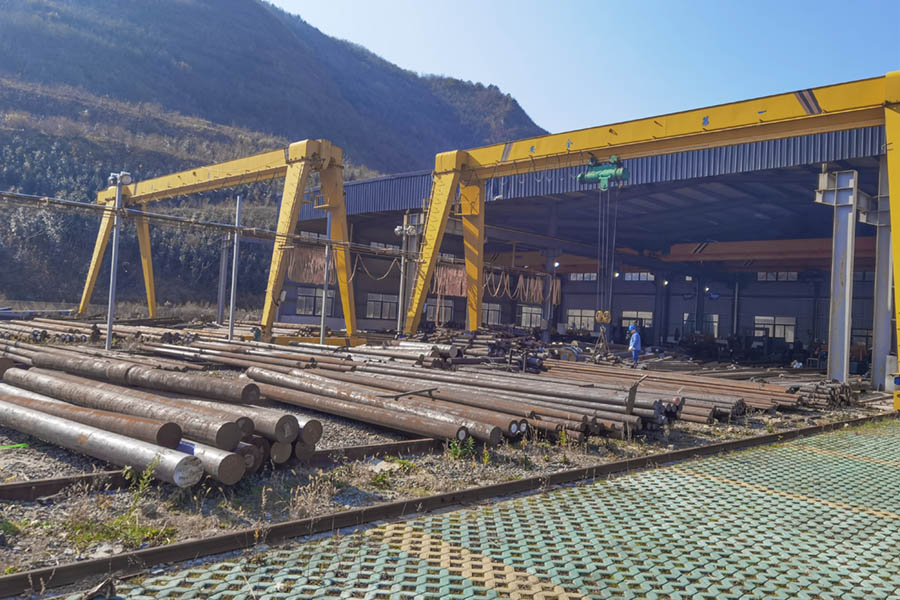We provide custom solutions to all our customers and offer complete technical advices that your company can take advantage of.
Choosing the right screw and barrel configuration for your specific polymer processing needs can be a complex task, as there are many factors to consider. Here are some steps you can take to help ensure you select the best configuration:
Identify the polymer you will be processing. Different polymers have different processing requirements, so it is important to understand the properties of the polymer you will be using.
PET, which is a thermoplastic polymer commonly used for the production of plastic bottles, containers, and films. PET has good mechanical properties, high strength, and resistance to impact and temperature changes, making it a popular choice for packaging and other applications. However, PET has a relatively high processing temperature and requires a specific screw and barrel configuration to be processed efficiently.
Determine the processing parameters. The processing parameters, such as temperature, pressure, and shear rate, can have a significant impact on the performance of the screw and barrel system. You should consider these parameters when selecting your configuration.
Screw speed: The screw speed should be optimized to ensure proper shear rate, mixing, and residence time of the polymer in the extruder.
Consider the desired output. The output rate and quality of the product can be influenced by the screw and barrel configuration. Consider what you want to achieve in terms of output and quality when selecting your configuration.
Let's say you need to produce high-quality HDPE sheets with a smooth surface finish. The desired output is a sheet with uniform thickness, no warping, and no surface defects.
To achieve this output, you would need to choose a screw and barrel configuration that can provide the necessary mixing and melting of the HDPE while minimizing degradation and surface defects.
In terms of barrel design, a smooth barrel with a vented zone could be the best option. The smooth barrel will provide uniform heating and minimize any surface defects, while the vented zone will help remove any moisture or volatiles that may be present in the HDPE.
Look at the screw design options. There are many different screw designs, such as single-flighted, double-flighted, and barrier screws. Each design has its own strengths and weaknesses, so it is important to consider the specific requirements of your polymer when choosing a screw design.
Single-flighted screw: This is the most basic screw design and is suitable for simple processing applications where a low level of shear and mixing is required.
Double-flighted screw: This screw design is similar to the single-flighted screw, but with two helical flights instead of one. It provides a higher level of shear and mixing than the single-flighted screw and is suitable for processing applications that require greater mixing and homogenization.
Barrier screw: A barrier screw has a section in the middle of the screw where the flight depth is reduced, creating a barrier that helps to increase shear and mixing. This design is particularly effective for processing high-viscosity materials that require a high level of shear to be processed efficiently.
Choose the appropriate barrel design. Barrel designs can include smooth, grooved, and vented barrels. The appropriate barrel design depends on the specific processing requirements of your polymer.
Example of barrel design options to consider for a polymer processing application:
Smooth barrel: This is the most basic barrel design and is suitable for simple processing applications where a low level of shear and mixing is required. The smooth surface of the barrel allows for uniform heating of the polymer.
Grooved barrel: A grooved barrel has a series of grooves along its length that help to increase the surface area of the barrel and promote mixing and shear. This design is suitable for processing applications that require higher levels of mixing and shear, such as compounding or mixing applications.
Vented barrel: A vented barrel has a venting system that allows for the removal of volatiles or moisture from the polymer melt. This design is particularly useful for processing applications where the polymer contains moisture or volatile compounds.
Shrouded barrel: A shrouded barrel has an outer jacket that surrounds the barrel, which can be heated or cooled to control the temperature of the polymer melt. This design is useful for processing applications where precise temperature control is necessary.
Nitrided barrel: A nitrided barrel is a barrel that has been treated with a nitriding process, which creates a hard, wear-resistant surface. This design is suitable for processing applications that involve abrasive or corrosive materials.
Take into account the screw and barrel materials. The materials used for the screw and barrel can impact the performance and longevity of the system. Choose materials that are compatible with your polymer and that will withstand the processing conditions.
for a processing application that involves a lower temperature polymer like PVC, a screw and barrel made of nitrided steel or bimetallic alloys would be a good choice. These materials have good wear resistance and can withstand the corrosive nature of the PVC.
Consult with an expert. Screw and barrel selection can be complex, and it may be beneficial to consult with an expert in the field to help guide your decision-making process. Still have trouble in finding the right screw and barrel for your project? Feel free to contact Barrelize, we can't wait to help you and offer best products and service for type of screw and barrel.

